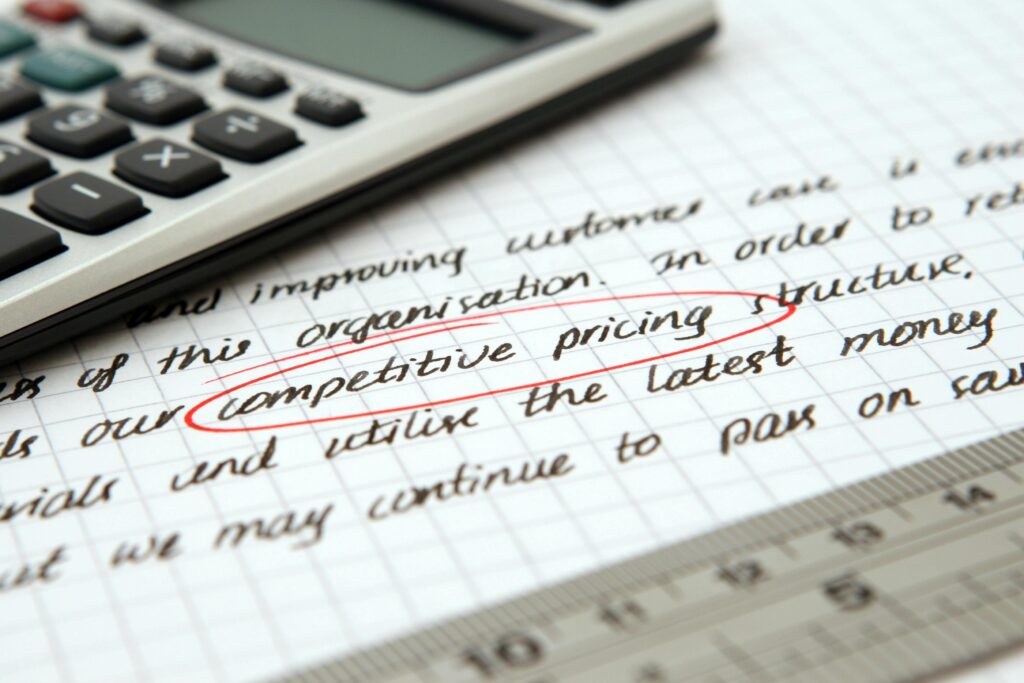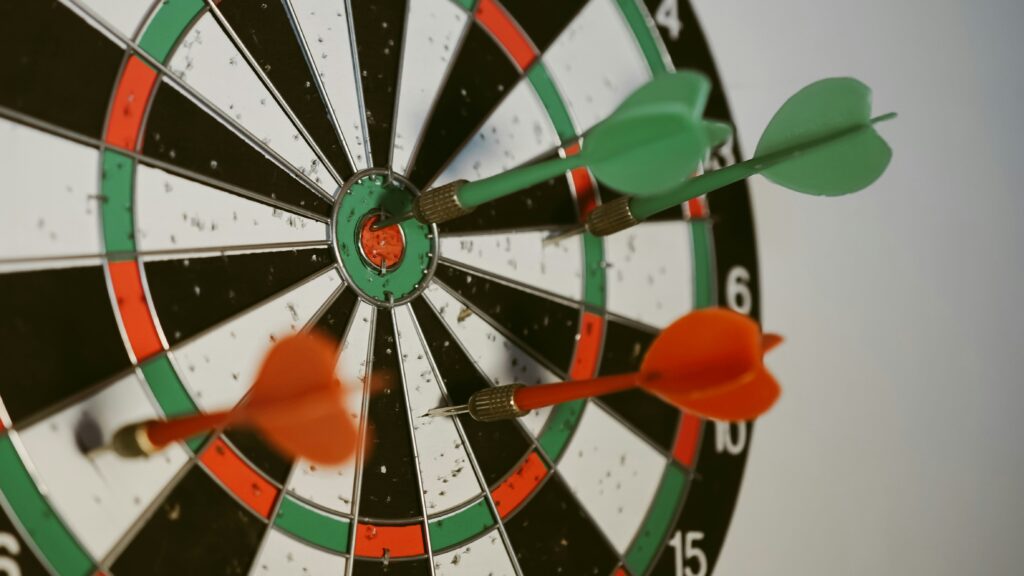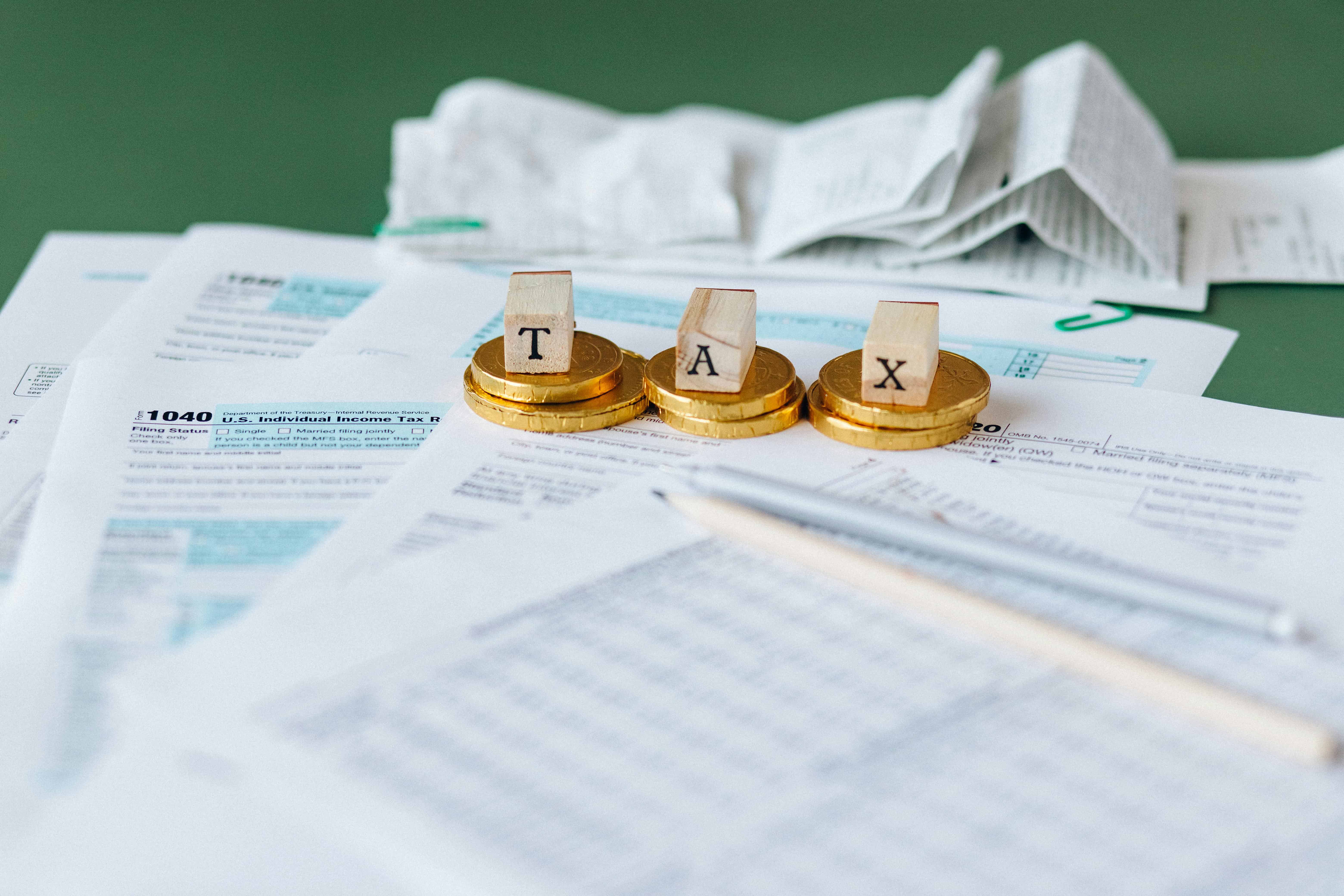Dreaming of launching your own barbershop business? Wondering how to start a barbershop business and succeed in this booming industry? The global barbershop market is projected to exceed $104.4 billion by 2027. This is the best opportunity for you to start a barbershop business and make a good living.
As more men prioritize grooming and seek professional barber services, the demand for high-quality barbershops continues to soar. In this comprehensive guide, we’ll walk you through the essential steps to turn your dream into reality.
From creating a solid business plan to mastering effective marketing strategies, we’ve got you covered every step of the way.
Let’s not delay any further and get started!
In short, to start a barbershop business you need to take the following steps
- Research the Market: Understand your audience and competition to tailor your services.
- Define Your Goals: Set clear objectives to guide your business growth and development.
- Create a Budget: Plan your finances meticulously to cover all startup expenses.
- Obtain Necessary Licenses: Ensure legal compliance by obtaining required permits and licenses.
- Choose a Suitable Location: Select a strategic location with high visibility and accessibility.
- Build Your Brand: Craft a memorable brand identity to attract and retain customers.
- Market Your Barbershop: Utilize effective marketing strategies to reach your target audience.
1. Research and Market Analysis:
Performing thorough market research is crucial for any barber looking to establish a successful business. Whether you’re starting from scratch or transitioning from an existing barbershop, understanding your target audience is key.
You should identify who your potential clients are, whether they’re men, women, families, or individuals of all ages. This knowledge will enable you to tailor your services and marketing efforts effectively, helping you attract clients more efficiently.
You will also need to research local competitors and businesses in your area. Analyze their pricing strategies, services offered, and geographical locations to identify gaps in the market. By finding a unique niche to serve, you can differentiate yourself from the competition and avoid direct competition with established barbershops.
Consider targeting underserved demographics or offering specialized services that align with the needs and preferences of your target market. This strategic approach will position your barbershop for success and help you create a unique offering for your barbershop.

2. Define Your Business Goals:
Establishing clear objectives is important in getting your barbershop business towards success. By creating both short-term and long-term goals, you create realistic expectations and a roadmap for progress and growth.
Here is how your barbershop business goals should be:
Vision and Strategy Alignment:
Begin by aligning your goals with the vision and strategic direction of your barbershop. Consider where you want your business to be in the future and tailor your objectives to support this vision.
SMART Criteria:
Utilize the SMART criteria—Specific, Measurable, Achievable, Relevant, and Time-bound—to structure your goals effectively. Ensure each goal is precise, quantifiable, realistic, and bound by a deadline to facilitate clarity and accountability.
Prioritization and Focus:
Prioritize your goals based on their significance and potential impact on your business. Focus on pursuing objectives that align with your core values, strengths, and market opportunities, maximizing your resources for optimal results.

Adaptability and Flexibility:
Your goals should always have room for change. You should sometimes have to extend deadlines or focus on new goals unforeseen challenges or emerging opportunities.
Continuous Evaluation and Reflection:
You should have an accountability system prepared beforehand to measure success and adjust your strategy. Reflect on your achievements, identify areas for improvement, and refine your strategies to sustain momentum and drive continuous growth.
3. Identify a Niche for Your Barbershop
Discovering a niche market tailored to your barber shop’s unique strengths can significantly enhance your chances of success. Rather than attempting to cater to everyone’s needs, focusing on a specific segment of the market allows you to provide specialized services that resonate deeply with your target audience.
When selecting your niche, consider factors such as demand, competition, and your team’s expertise. Your niche could revolve around various aspects, including pricing, service quality, service type, or target demographics and psychographics.
After market research you will have a clear idea if your niche has a demand in market or not.
if your specialization leans towards modern, on-trend hairstyles, your barber shop could offer services with a focus on contemporary styles. Crafting a vibrant and trendy brand image through your website and marketing endeavors can appeal to a younger demographic, setting your business apart in a dynamic and competitive market.
Getting your niche right may sometimes require time and experimentation and you can evolve to other niches once you have successfully introduced one.

4. Establish Your Business’s Legal Structure
Determining the legal structure of your barbershop is an important step in laying the groundwork for your barbershop business. This decision not only affects how you manage finances but also impacts your tax obligations and personal liability.
You will have various business structures available to you, such as sole proprietorship, corporation, partnership, or limited liability company (LLC).
If you’re operating solo, a sole proprietorship may be the most suitable option. This will simplify tax filings and keep you personally liable for the business’s obligations.
On the other hand forming a corporation separates your personal assets from those of the business, offering enhanced protection but requiring adherence to corporate formalities.
Partnerships, whether general or limited, provide opportunities for collaboration but necessitate clear agreements and delineation of responsibilities among partners.
LLC can act as a middle ground between the two combining liability protection with the flexibility of partnership taxation. Each structure has its merits and implications, so it’s advisable to consult with legal and financial professionals to determine the best fit for your barbershop’s vision and objectives.
You can get in touch with a well reputed lawyer or finance person in your locality to understand these in detail. Once you have selected and registered your legal structure you might not be able to change it depending on the laws in your country.
So make sure you take your decision after proper consultation and guidance.

5. Get a Barbers license
Getting a barber license is vital for establishing your credibility and legality in the industry. Every country and every state within the country might have its own requirements for getting a barber liscense.
For example, in the United States each state has unique requirements, so research your area’s guidelines thoroughly. Licensure requirements vary by state, but generally, an individual must be at least age 16 or 17, must have obtained a high school diploma or equivalent, (3) successfully complete training at a state-approved barber or cosmetology school, (4) pass a practical examination, and (5) pay licensing and examination fees.
Start by contacting the Barber Regulatory Authority or a similar body for specific instructions and resources. Typically, completing a designated number of training hours at an accredited barber school is necessary. Ensure you document your experience with a letter from a licensed mentor when submitting your application.
In addition to the barber license, you’ll need various business licenses and permits to operate legally. These include a business operating license, certificate of occupancy, and permits from the fire department and building authorities. Obtaining these demonstrates your compliance with regulations and ensures your shop meets safety standards.
We would advice you to seek guidance from professionals or industry associations to navigate the process effectively.
6. Calculate Your Expenses and Finances
Managing finances and expenses is a crucial aspect of launching a successful barbershop business. Before starting your barbershop business you should know about:
- Assess Setup Costs: Begin by evaluating all startup expenses, including licenses, permits, and operational costs.
- Establish a Budget: Create a detailed budget to understand monthly income targets and effectively manage overhead expenses.
- Property Considerations: Decide whether to buy or rent your barbershop property, taking into account projected annual revenue and service pricing based on market research.
- Tool and Equipment Costs: Calculate the expenses associated with acquiring essential tools like scissors, razors, and other barbering equipment.
- Marketing Expenditures: Budget for marketing and promotional activities to attract and retain clients, ensuring effective outreach in your target market.
- Separate Business Banking: Open dedicated business banking accounts to maintain financial separation from personal assets and streamline financial management.
- Research Financial Practices: Conduct thorough research on financial accounting practices for small businesses and explore various financing options, including loans and lines of credit.
- Understand Financing Options: Understand the fees, interest rates, and terms associated with different financing options before committing to any financial arrangement.
- Implement a POS System: Choose a point-of-sale (POS) system that integrates seamlessly with your business operations, providing comprehensive data on revenue, sales, and team performance.

7. Gather Funds for Your Barbershop
Securing funds for your barbershop is a crucial step in turning your business idea into a reality. There are several sources that you can explore to obtain the necessary capital:
Personal Savings: Utilizing your own savings is a common starting point for many entrepreneurs. It allows you to maintain full control over your business without incurring debt or interest payments. If you want to use your personal saving make sure that you have other sources of income because nobody likes to broke right?
Loans: Loans from banks, credit unions, or online lenders are another option to consider. Various loan types, such as small business loans or personal loans, offer different terms and interest rates.
It’s essential to research and compare loan options to find the best fit for your financial situation.
Lines of Credit: Some financial institutions, lenders, or even payment processors may offer lines of credit specifically tailored to small businesses. A line of credit provides flexible access to funds as needed, allowing you to manage cash flow fluctuations effectively.
Family and Friends: Seeking financial assistance from your relatives or friends is a viable option. However, it’s essential to approach such arrangements with clear communication and formal agreements to avoid potential conflicts in the future.
You don’t necessarily have to go with only one source of funds. You can try out a combination of these sources according to your needs. As a new business you would want to stay as much debt free as possible.
Consulting with housing counselors or credit advisors can provide valuable insights into the loan process and help you make informed decisions.
8. Register Your Barbershop for Taxes
Registering your barbershop for taxes is an important step in ensuring compliance with state and federal regulations. Before opening your business, you’ll need to complete several tax registrations to meet legal requirements. Here’s a breakdown of the key registrations you’ll need to consider:
- Employer Identification Number (EIN): Obtaining an EIN is necessary for your business, especially if you have employees. This unique identifier will help you in tax filing purposes and will allow you to open business bank accounts, apply for licenses, and hire employees.
- Electronic Filing and Tax Payment System (EFTPS): If you have employees, you’ll need to enroll in the EFTPS to handle federal tax payments, including income tax withholding, Social Security, and Medicare taxes.
- Business Entity Registration: Depending on your chosen legal structure, such as a corporation, partnership, or LLC, you’ll need to register your barbershop as a business entity with the appropriate state authorities. If you are a sole proprietor you may not require formal registration but still need to obtain necessary licenses and permits.
- State Registrations: Each state has its own requirements for income tax, sales tax, and employment taxes. You’ll need to register with your state’s tax agency to comply with these obligations and ensure proper tax reporting and remittance.
- Trademark Protection: Consider trademarking your barbershop’s name, slogan, and logo to protect your brand identity from infringement. Trademarks provide legal protection against unauthorized use by competitors and help establish your unique presence in the market.

9. Develop a Business Plan for Your Barbershop Business:
Drafting a comprehensive business plan lays the groundwork for launching a successful barbershop. Here’s a breakdown of essential components to include in your business plan:
- Executive Summary: This section provides an overview of your barbershop business, outlining its mission, offerings, leadership team, and financial projections. It serves as a compelling introduction to investors or potential partners, highlighting the potential for success.
- Company Description: This section mentions the specifics of your barbershop, including its name, location, legal structure, and key stakeholders. Conduct a thorough analysis of competitors, identifying their strengths and areas for differentiation.
- Market Research and Analysis: Gain insights into the barbershop industry at both local and national levels. Explore your competition, their strategies, and market trends to identify opportunities for growth and competitive advantage.
- Service Description: Provide a detailed description of the services offered by your barbershop, emphasizing unique selling points and value propositions. Mention how your offerings meet the needs of your target audience and differentiate your business from competitors.
- Marketing and Sales Strategies: Outline your marketing and sales approach, detailing tactics for attracting and retaining customers. Develop strategies for branding, advertising, and customer acquisition, leveraging both traditional and digital channels.
- Financial Projections: Present detailed financial projections, including revenue forecasts, expenses, and profit margins. Provide a breakdown of funding requirements and sources.
- Appendix: Include supporting documents such as resumes, licenses, permits, and other relevant materials to substantiate your business plan.
A well-prepared business plan can help you get the attention of investors in your local community and also work as a guide for your business.
10. Choose a Location For Your Barbershop
Choosing the right location for your barbershop is crucial for its success. It’s essential to consider various factors to ensure your barbershop succeeds in its chosen area. Here’s what you need to pay attention to when selecting the optimal location:
Target Market:
Identify your target customer demographic and choose a location near where they live or work. High foot traffic areas with a concentration of your target market ensure a steady stream of customers.
Rent and Lease Terms:
Look for a location with affordable rent and favorable lease terms, such as long-term leases and potential rent reduction options based on business performance. In the beginning if you have low funds you will want to keep the rent and lease costs as low as possible.
Accessibility and Visibility:
make sure that the location of your barbershop is easily accessible and visible to potential customers. A storefront in a high-traffic retail area can attract walk-in customers and enhance brand awareness.
Parking:
Consider the availability of parking options for your customers, either on-site or nearby public parking facilities.
Brand Alignment:
Choose a location that aligns with your brand image and style. The space should complement your brand’s atmosphere and aesthetics to enhance brand recognition and customer appeal.

Condition and Safety:
Select a space that is in good condition with reliable utilities and amenities, including plumbing, electricity, heating, and cooling. Additionally, prioritize safety by choosing a location in a secure neighborhood to ensure the safety of both your barbershop and customers.
Competition:
Evaluate the number and type of existing barbershops in the area to know about the competition levels. Consider locations with less competition or opportunities to differentiate your services and attract customers.
Community and Business Environment:
Assess the surrounding community and business environment to ensure it aligns with your target demographic and business goals. Choose locations that are well-connected and have a vibrant business ecosystem to support your growth objectives.
Buying vs. Renting:
Decide whether to buy or rent the facility based on your financial analysis, funding availability, and long-term business objectives. Consider factors such as tax implications, cost of capital, and lease terms when making this decision.
11. Build a Talented Team
Building a reliable and talented team is essential for the success of your barbershop. You should never compromise on the skills of the people you hire. Once your business and location are established, focus on assembling a team of skilled professionals who share your commitment to excellence and customer satisfaction. Here is what to look for when hiring people for your barbershop business:
- Recruitment: Recruit experienced barbers who are dedicated to the success of your business and are motivated to contribute to its growth. You can find such people by posting jobs online on LinkedIn, Facebook groups and other job websites.
- Hiring Strategy: Determine whether you’ll hire employees or offer chair rental/lease options in your barbershop. Consider factors such as training requirements, payment structures, and promotional opportunities for your team members.
- Training and Development: Decide whether you’ll hire less experienced barbers and provide training or seek experienced professionals. Invest in ongoing training and development programs to enhance the skills and expertise of your team members.
- Support Staff: Consider hiring additional support staff such as receptionists, accountants, and part-time employees to manage various aspects of your barbershop operations, including scheduling, finances, and maintenance.
- Incentives and Rewards: Motivate your team members by offering incentives such as commissions for upselling services or products.
You should determine all these things before starting the hiring process for your barbershop. Try not too hire too many team member at the beginning.
12. Create a Website for Your Barbershop Business
Creating a barbershop website is not necessary but it will help you get more reach and can allow people to book haircuts or any other grooming services online for any future dates.
A well-designed website serves as a digital storefront, offering potential customers essential information about your barbershop and encouraging them to engage with your services.
Your website should feature key details such as your barbershop’s location, contact information, and booking options. You should incorporate high-quality images of your barbershop interior, team members, and examples of your work to visually captivate visitors.
Provide comprehensive descriptions of your services and transparent pricing.
To maximize accessibility and user experience, ensure that your website is optimized for mobile devices and offers intuitive navigation.
13. Promote your Barbershop on Social Media
You can use social media platforms like Instagram and Facebook to promote your barbershop and engage with your customers. Post regularly and use hashtags to reach a wider audience.
Encourage your customers to tag you in their photos and share their experiences at your barbershop.
Get good reviews on customer review sites
Many potential customers look at review sites such as Yelp before deciding to try a new place. In order to receive a good review, you need to have great customer service. You can also ask your customers to leave a review.
Purchase local ads
Another marketing tool is to purchase ads in a local newspaper, TV station, or radio station. Prices vary for ads depending on the place and the type of ad.
Offer specials and promotions
Offer specials and promotions to attract new customers and incentivize repeat business. For example, you could offer a discount on first-time haircuts, or a loyalty program that rewards customers for frequent visits.
Partner with other businesses
Partner with other local businesses to cross-promote each other’s services. For instance, offer a discount to customers who show their receipt from a neighboring coffee shop or clothing store.
Get referrals
You can give customers incentives who bring in additional customers with them or refer people to your barbershop. Without a doubt, word-of-mouth marketing is one of the most effective methods to get your barbershop out there.
14. Market Your Barbershop
Marketing is an important aspect of the success of your barbershop. If you get this one pillar right you will be well on your way to success. Barbershop marketing includes many different strategies and channels but you don’t have to use all of them.
15. Grand Opening and Promotion:
Now that you’ve laid the groundwork for your barbershop, it’s time to kick things off with a bang! Your grand opening is your chance to make a memorable impression, so let’s make it count.
Plan a Memorable Grand Opening Event:
Think big and get creative when planning your grand opening event. Consider hosting a themed party, organizing live music or entertainment, or collaborating with local businesses for added excitement. The goal is to create a buzz and draw attention to your new barbershop.
Offer Special Promotions and Discounts:
Everyone loves a good deal, especially when it comes to grooming services. Offer special promotions, discounts, or giveaways to entice potential clients to book appointments and experience what your barbershop has to offer.
Build Customer Loyalty:
Use your grand opening as an opportunity to start building relationships with your clients. Offer incentives for repeat business, such as loyalty programs or referral rewards. By showing your appreciation for their support from the beginning, you’ll foster long-term customer loyalty and keep them coming back for more.
Conclusion
Let’s hope that you learned about how to start a barbershop business and are ready to get your barbershop into the market.
It begins with thorough market research to understand your target audience and competitors, allowing you to identify opportunities for differentiation. Defining clear and measurable goals is crucial, providing a roadmap to guide your business growth and keep you focused on success.
A comprehensive business plan serves as the foundation of your barbershop venture, outlining your mission, services, market analysis, and financial projections
Choosing the right legal structure and obtaining the necessary licenses and permits ensure compliance with regulations, laying the groundwork for a legally sound operation. Finances play a significant role, requiring careful budgeting and securing funding to cover startup costs and ongoing expenses.
Selecting a strategic location with high foot traffic and accessibility to your target market is vital for success. Building a skilled and motivated team who share your vision for the business contributes to a positive work environment and enhances customer experience.
Marketing efforts, including establishing an online presence through a website and social media, as well as leveraging promotions and partnerships, are essential for attracting customers and building brand awareness.
Finally, planning a memorable grand opening event can generate excitement and build customer loyalty from the start, setting the stage for a successful journey ahead. By following these steps and remaining dedicated to providing exceptional service, you can launch and grow a thriving barbershop business.
FAQ’s
How profitable is owning a barber shop?
Owning a barber shop can be profitable, but profitability depends on various factors such as location, overhead costs, pricing strategy, and the ability to attract and retain clients.
How do I start a simple barber shop?
Starting a simple barber shop involves steps like conducting market research, writing a business plan, securing financing, finding a suitable location, obtaining necessary licenses and permits, purchasing equipment, hiring staff, and marketing your services.
How much does it cost to start barbering?
The cost of starting a barbering business can vary widely depending on factors like location, size, equipment, and licensing fees. On average, startup costs can range from a few thousand dollars to tens of thousands of dollars.
4. Is it hard to run a barbershop?
Running a barbershop can be challenging, as it requires managing various aspects of the business such as finances, staff, marketing, and customer service. However, with proper planning and dedication, it can also be rewarding.
Is owning a barbershop a good investment?
Owning a barbershop can be a good investment for those passionate about the industry and willing to put in the effort to build and grow the business. Success depends on factors like location, competition, and the ability to provide quality services.
How do barbershop owners make money?
Barbershop owners make money by charging for haircuts, grooming services, and other related services provided to clients. Additionally, some barbershop owners may generate revenue through product sales, booth rentals, and partnerships.
Can a barber make 100k?
Yes, it’s possible for a skilled and experienced barber to make six figures annually, especially in high-demand areas or by specializing in lucrative services such as celebrity grooming or luxury barbering.
Do barbers get rich?
While some barbers may achieve financial success and build wealth over time, it’s not guaranteed for every individual in the profession. Success often depends on factors like skill level, business acumen, location, and market demand.
How can a barber make 6 figures?
Barbers can increase their earning potential and make six figures by offering specialized services, building a loyal clientele, leveraging marketing and branding strategies, investing in education and skill development, and exploring additional revenue streams such as product sales or teaching.
